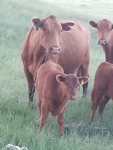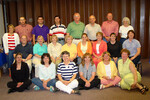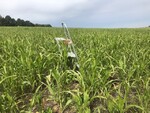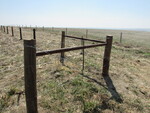Posted date: Apr 23, 2022
by: Admin My Local Life
529 Views
Contour grass buffer strips are narrow strips of perennial vegetation alternated down the slope with wider cropped strips that are farmed on the contour. Contour grass strips are used on cropland with potential for sheet and rill erosion. Many times, grass buffer strips are used in combination with terraces. The grass buffer strips are typically used below terraces where land slopes are less than 4 to 5 percent. Grass buffers work best when used with other conservation practices like reduced tillage, no tillage and multi-year, multi-crop rotations. Benefits of contour grass buffer strips include:
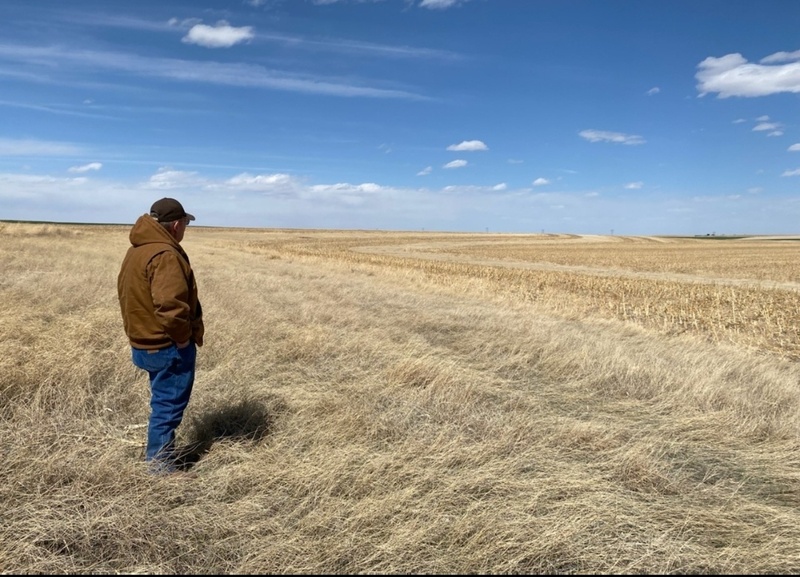
- Reduced sheet and rill erosion
- Reduced water quality degradation from transport of sediment
- Improved soil moisture management
- Increased water infiltration into soil
- Improved pollinator habitat
- More upland game habitat
The grass buffer strips should be planted to a multi-species native grass mixture of warm season grasses and forbs. Native tall grass species commonly used are Indiangrass, Big Bluestem and Switchgrass. They are used because of their stiff upright stems. Stiff upright stems of prairie plants take so much energy out of water flowing downhill that sediment drops out in the grass strips and does not leave the field. The forbs planted include a minimum of 10 native flowering plants. Introduced species are not allowed in native plantings. At least two forb species shall be from each bloom period – early, mid, and late flowering season. This native mixture will use 35-40 seeds per square foot. The grass seed should not exceed 90% of the seed mix based on seeds per square foot. Grass buffer strip width is often 30 feet. This width of grass strips is good nesting cover for upland game birds and other native wildlife species and pollinators. Converting 10 percent of a field to contour prairie grass strips will reduce soil erosion and sediment transport by 95% compared to cropland without prairie strips. Overland water flow is reduced by 42%. Nitrogen transport is reduced by 85%. Prairie strips increase the diversity of plants, pollinators, songbirds, and other wildlife. Prairie strips provide year-round habitat and food for pollinators and other beneficial insects that prey on crop pests.
Operation and maintenance of contour grass strips is very important. See the following list:
- Conduct all farming operations parallel to grass strip boundaries
- Control weeds during the year of grass establishment
- Do not disturb cover during the primary nesting season for wildlife
- Control all noxious weeds. Use herbicides or spot mowing before seed heads form. Where
possible, delay control measures till after August 1 to protect nesting wildlife.
- Control noxious weeds.
- Protect grass strips from haying and grazing.

Photo by Lyndsie Beasley - Reseed acres that do not have adequate cover
- Do not use grass strips for field roads or other uses that destroy grass cover.
- When native prairie grass strips are used with cropland, a 380% increase in native plant species
has been observed, as compared to entirely cropped watersheds.
- Prairie plants provide year-round habitat for beneficial insects and pollinators that prey on crop
pests.
- When mowing grass strips, always mow after the nesting season. Mow only 1/4 to 1/3 of the
area each year.
- Spraying or other control of noxious weeds shall be done on a “spot” basis to forbs and legumes
that benefit native pollinators and other wildlife.
In summary, contour prairie grass strips reduce soil erosion, increase diversity of plants, pollinators, songbirds, and other wildlife. This complex ecosystem is teaming with life. Grass strips catch sediment and excess nutrients moving down slope. The grass strips are a metropolis for beneficial insects including pollinators like bees, butterflies, wasps, and predatory insects that control crop pests. The result is that contour grass buffer strips are cost effective.



